INDIA CARBON LTD.
Featured Products
Highest quality standards are achieved through the implementations of latest technology, decades of experience and everlasting moral values , which have helped us to retain our customers as well as multiply them.
Welcome to INDIA CARBON LTD.
Calcined Petroleum Coke
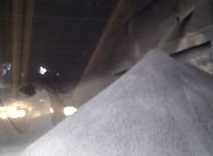
Calcined Petroleum Coke (CPC) is a form of highly electrically conductive, densed Carbon with very low specific Electrical Resistance, and having fixed Carbon of approximately 99.5%.
CPC is used extensively as Anode in Alumina Smelters, as Soderberg's Electrode for Ferroalloy Industries, and in the manufacturing of Graphite/ Graphite Electrodes, and Thermal Paste for Ferro Alloys & allied industries in Submerged Arc Furnaces.
CPC is also used in various Steel Industries for - Melting of Steel , Recurburisation and for making Special Steels & Alloys.
Calcination Process
Raw Coke is Calcined to develop specific properties to make it suitable for industrial purposes. The Calcination (of Raw Coke) involves controlled heating of the Raw Coke to the temperature in the range of 1250°C to 1350°C. This process drives off moisture, hydrocarbons and other volatile matter present in the Raw Coke is burnt off - thereby densified the particles and changes the electrical properties from insulating to conducting. Raw Coke after Calcination is known as Calcined Petroleum Coke. At India Carbon, Calcination is performed in an oil fired rotary kiln with suitable refractories. Raw Coke crushed into lumps is fed through Conveyor System to the slightly elevated end of the rotary kiln. The coke progresses towards the firing end of the kiln and during it's passage down the kiln any moisture present is driven off by the counter current of hot combustion gasses. Volatile (Hydrocarbon) present in the Raw Coke also evolves and burn as the temperature increases, providing additional heat energy to the calcination process.
Manufacturing Process
The burner is regulated only to achieve desired final temperature. When the Coke reaches the firing end at the kiln, it drops into a chute and is led into a rotary cooler positioned beneath the kiln. The cooler is equipped with water spray to directly quench and cool the Coke. The amount of cooling water is controlled so that the coke does not get wet and remains dry within limit of moisture content. The cooled Calcined Coke coming out of the cooler, is then routed by the conveyor system to bulk storage and further bagged for shipment to customers.
Electrode Carbon Paste
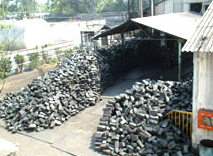
Electrode Carbon Paste is a Soderberg paste processed from a mix of a specific fraction of Calcined Petroleum Coke (CPC) and / or Electrically Calcined Anthracite Coal (ECA), impregnated with selective Coal Tar Pitch Binder at a definite temperature.
It is used in submerged Arc Furnaces for production of various Ferro Alloys and Calcium Carbide.
Manufacturing Process
The first step in the manufacture of Electrode Carbon Paste is screening the Calcined Petroleum Coke (CPC) and / or (ECA) to different fractions and pulverizing and storing it separately. Following this, pre-determined quantities of different fractions are weighed and transferred to a Sigma Mixer which is heated to about 150ºC by thermic fluid. The required quantity of binder is also weighed separately and added to the mixer. The mixing is continued for a pre-determined period known as the mixing cycle. At the end of the mixing cycle, the mixed material is dumped on the mould box and cast into blocks for shipment.
Quality Specification
At the customer's end the paste is fed in the upper part of the electrode. As the paste moves downwards in the electrode it softens and melts forming the shape of the electrode casing. Flowability of Carbon Paste is essential for proper operation of the electrode. It is important that the paste flows at a reasonable temperature and fills the casing of the Electrode, maintaining a consistent mixture of components. The paste then gets baked to a solid mass as it moves down and is capable of passing the required current to the furnace charge. The plasticity of Paste, the measure of its flowability is controlled in the mixer by adjusting the Binder content or percentage of coke fines. The lower baked part of the electrode is the final Electrode Product. The physical properties of this Paste are of vital importance to ensure proper electrode operation with out breakages.
A Typical Characteristics of CPC based Carbon Electrode Paste is as follows
Green Paste
Volatile Matter 15% Max
Fixed Carbon 84% Min
Ash 1.0% Max
Plasticity 45 - 55%
Apparent Density 1.55 gms/cc Min
Binder Content 22 - 24%
Baked Paste at 1000deg Centigrade
Apparent Density 1.35 gms/cc Min
Electrical Resistivity 90 ohm-meter Max
Compressive Strength 150 Kg/cm2 Min
Porosity 35% Max
Tamping Paste
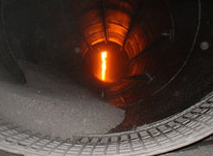
Tamping Paste, also known as Thermal Paste is used in the Ferro Alloys & Allied Industries for the lining of the furnace. The paste is produced from a mixture of different carbonaceous material (Calcined Petroleum Coke, Calcined Anthracite Coal etc.) and Soft Pitch as binder.
Manufacturing Process
The first step in the manufacture of Tamping/Thermal Paste is screening the Calcined Petroleum Coke (CPC) and / or (ECA) to different fractions and pulverizing and storing it separately. Following this, pre-determined quantities of different fractions are weighed and transferred to the Sigma Mixer which is heated to a predefined temperature by the thermic fluid. The required quantity of binder is also weighed and added into the mixer. The mixing is continued for a specific period known as the mixing cycle. At the end of the mixing cycle, the mixed material is dumped onto the mould box and cast into blocks which are then ready for shipment.
Quality Specification
The thermal insulation of the furnace pots is essential. It is important that the Tamping paste does not have any excess binder and fills the wall of the furnace, maintaining proper insulation & minimizing the heat loss
Typical Characteristics of CPC based Tamping Paste are as follows
Green Paste
Volatile Matter 12% Max
Fixed Carbon 87% Min
Ash 1.0% Max
Plasticity 8 - 15%
Apparent Density 1.55 gms/cc Min
Binder Content 19 - 21%
Baked Paste at 1000deg Centigrade
Apparent Density 1.35 gms/cc Min
Electrical Resistivity 90 ohm-meter Max
Compressive Strength 150 Kg/cm2 Min
Porosity 35% Max
Thermal Paste
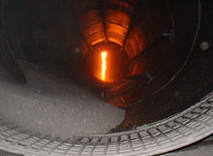
Tamping Paste, also known as Thermal Paste is used in the Ferro Alloys & Allied Industries for the lining of the furnace. The paste is produced from a mixture of different carbonaceous material (Calcined Petroleum Coke, Calcined Anthracite Coal etc.) and Soft Pitch as binder.
Manufacturing Process
The first step in the manufacture of Tamping/Thermal Paste is screening the Calcined Petroleum Coke (CPC) and / or (ECA) to different fractions and pulverizing and storing it separately. Following this, pre-determined quantities of different fractions are weighed and transferred to the Sigma Mixer which is heated to a predefined temperature by the thermic fluid. The required quantity of binder is also weighed and added into the mixer. The mixing is continued for a specific period known as the mixing cycle. At the end of the mixing cycle, the mixed material is dumped onto the mould box and cast into blocks which are then ready for shipment.
Quality Specification
The thermal insulation of the furnace pots is essential. It is important that the Tamping paste does not have any excess binder and fills the wall of the furnace, maintaining proper insulation & minimizing the heat loss
Typical Characteristics of CPC based Tamping Paste are as follows
Green Paste
Volatile Matter 12% Max
Fixed Carbon 87% Min
Ash 1.0% Max
Plasticity 8 - 15%
Apparent Density 1.55 gms/cc Min
Binder Content 19 - 21%
Baked Paste at 1000deg Centigrade
Apparent Density 1.35 gms/cc Min
Electrical Resistivity 90 ohm-meter Max
Compressive Strength 150 Kg/cm2 Min
Porosity 35% Max
Raw Petroleum Coke
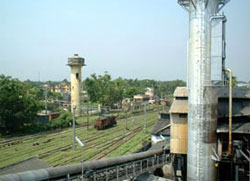
Description / Specification of Raw Petroleum Coke
We are involved in offering a wide range of Raw Petroleum Coke to our most valued clients. Our range of these are widely appreciated by our clients which are situated all round the nation. We offer our range of it at most affordable prices.
We introduce ourselves as an eminent trader and supplier of an extensive array of Raw Petroleum Coke. Prior to dispatch, our quality controllers run numerous tests on the entire range on various parameters of quality and durability. The offered equipment is manufactured using superior quality components with the aid of sophisticated techniques at the vendors' end. Moreover, our precious clients can purchase it in different technical specifications at reasonable price from us within promised time frame.
Features:
Sturdy design
Highly durable
Application specific design
Calcined Petroleum Coke.
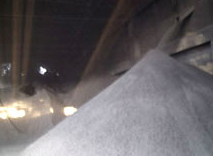
Raw Coke is Calcined to develop specific properties to make it suitable for industrial purposes. The Calcination (of Raw Coke) involves controlled heating of the Raw Coke to the temperature in the range of 1250°C to 1350°C. This process drives off moisture, hydrocarbons and other volatile matter present in the Raw Coke is burnt off - thereby densified the particles and changes the electrical properties from insulating to conducting. Raw Coke after Calcination is known as Calcined Petroleum Coke. At India Carbon, Calcination is performed in an oil fired rotary kiln with suitable refractories. Raw Coke crushed into lumps is fed through Conveyor System to the slightly elevated end of the rotary kiln. The coke progresses towards the firing end of the kiln and during it's passage down the kiln any moisture present is driven off by the counter current of hot combustion gasses. Volatile (Hydrocarbon) present in the Raw Coke also evolves and burn as the temperature increases, providing additional heat energy to the calcination process.
Our Vision
* To embrace new technologies and methods. * To give unsurpassed products and services to the clients. * To constantly look for improvement and changes.









